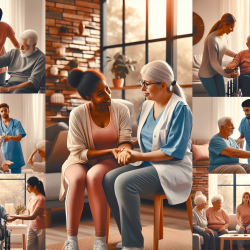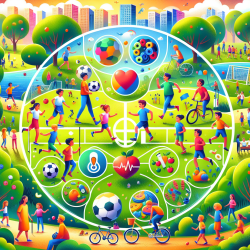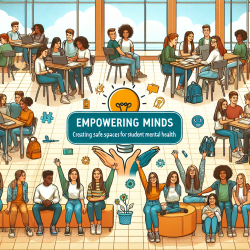Understanding the Rehabilitation Needs of Older Adults with Stroke
As a speech-language pathologist deeply committed to data-driven decision-making, I often emphasize the importance of using research to inform practice. One such pivotal study, "Rehabilitation needs for older adults with stroke living at home: perceptions of four populations," provides valuable insights into the unmet rehabilitation needs of older adults who have suffered a stroke. This blog will delve into the study's findings and offer practical advice for practitioners looking to enhance their rehabilitation strategies.
Key Findings from the Study
The study utilized focus groups comprising older adults with stroke, caregivers, health professionals, and health care managers across three regions in Quebec, Canada. The aim was to explore unmet rehabilitation needs that hinder social participation. The findings revealed persistent needs across three main areas:
- Personal Capabilities: Unmet needs were identified in areas such as behavior, motor activities, and language capabilities. For instance, caregivers and health professionals noted the importance of individualized rehabilitation to address behavioral changes and motor skill recovery.
- Environmental Factors: Participants highlighted the need for better access to medical care, rehabilitation services, and community resources. The study emphasized the importance of a personalized approach to rehabilitation, considering the socio-health system and education system's limitations.
- Life Habits: The study documented unmet needs in daily activities and social roles, such as personal care, mobility, and interpersonal relationships. These areas are crucial for maintaining quality of life and social participation.
Implications for Practitioners
Practitioners can leverage these findings to improve rehabilitation outcomes for older adults with stroke. Here are some actionable strategies:
- Personalized Rehabilitation Plans: Tailor rehabilitation programs to address individual capabilities and needs. This includes focusing on motor skills, language recovery, and managing behavioral changes.
- Enhanced Caregiver Education: Equip caregivers with the knowledge and resources they need to support rehabilitation at home. This includes training on assistive technologies and strategies for managing daily activities.
- Community Resource Integration: Facilitate connections between patients, caregivers, and community resources to ensure comprehensive support. This can help bridge gaps in the socio-health system and improve access to necessary services.
Encouraging Further Research
The study underscores the need for ongoing research to better understand and address the rehabilitation needs of older adults with stroke. Practitioners are encouraged to engage in research activities, collaborate with interdisciplinary teams, and contribute to the development of innovative rehabilitation strategies.
To read the original research paper, please follow this link: Rehabilitation needs for older adults with stroke living at home: perceptions of four populations.










